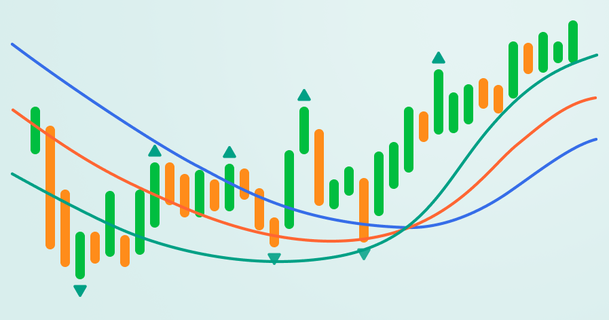
Bill Williams is the creator of some of the most popular market indicators: Awesome Oscillator, Fractals, Alligator, and Gator.
For a seamless experience, click “Redirect me.”

Don’t waste your time – keep track of how NFP affects the US dollar!
Data Collection Notice
We maintain a record of your data to run this website. By clicking the button, you agree to our Privacy Policy.

Beginner Forex Book
Your ultimate guide through the world of trading.
Check Your Inbox!
In our email, you will find the Forex 101 book. Just tap the button to get it!
Risk warning: ᏟᖴᎠs are complex instruments and come with a high risk of losing money rapidly due to leverage.
71.43% of retail investor accounts lose money when trading ᏟᖴᎠs with this provider.
You should consider whether you understand how ᏟᖴᎠs work and whether you can afford to take the high risk of losing your money.
2019-11-11 • Updated
Information is not investment advice
The index is a highly important trading instrument. Indexes have plenty of advantages. Thus, every trader should know about them. In this article, we will look at the three most important American indexes and determine their advantages. Let’s find out.
Standard & Poor's 500 Index - S&P 500 - is one of the most widely quoted American indexes as it represents the stock performance of 500 US largest publicly traded companies. However, checking the list, you will find 505 symbols because several companies have two share classes. For example, Facebook. The S&P market capitalization is 70 to 80% of the total US stock market. Moreover, the index is that it covers all US industries.S&P 500 considers different factors of companies such as market size, liquidity, and industry grouping before accepting them. The index gives a higher weighting to larger companies, not more expensive. The market capitalization of one company should be at least nearly $6 billion. Once a quarter, stocks are added or deleted as rules change, companies grow (or shrink), and merge.
S&P 500 is calculated by taking the sum of the market capitalization of all 505 stocks and then dividing it with an index indicator. The feature is that the index considers only the shares available for public trading.
Nasdaq Composite Index is the stock index of more than 3,300 companies that are listed on the Nasdaq stock exchange. Unlike S&P500, the list of companies is not limited by those who have only US headquarters. To be a part of the list, the security should be exclusively listed on the Nasdaq Stock Market (if only it was dually listed on another US market before January 1, 2004, and has continuously maintained such listing). There is also another restriction on the type of security. Only American depositary receipts (ADRs), common stock, limited partnership interests, ordinary shares, real estate investment trusts (REITs), shares of beneficial interest (SBIs), tracking stocks can be included in the index. As soon as the security doesn’t meet the criteria, it’s excluded from the index.
The index is calculated by multiplying the total value of the share by each security’s last price. Then the amount is divided by an index divisor. The index is calculated throughout the trading day with the final confirmed value at 4:16 p.m.
The Dow Jones Industrial Average (DJIA) is a price-weighted average of 30 North American stocks from different industries that are traded on the New York Stock Exchange and the NASDAQ. It’s the second oldest American market index. Since the past, the index performs the health of the American economy. At the moment of launch, the index included 12 stocks that were almost purely industrial. Nowadays, the index covers only companies with significant growth and investing capacity. So the stock list is not constant, companies are included and excluded based on certain non-quantitative criteria. As soon as a company survives financial difficulties, it is excluded. At the same time, the index excludes transportation and utilities, they are covered by the Dow Jones Transportation Average (DJTA) and Dow Jones Utilities Average (DJUA).
The index uses a price weighting methodology that gives more expensive stocks a higher weight. The DJIA is calculated by summing the component stock prices and dividing them by a divisor. The Dow Jones index shows the average value of stocks in those shares of capital that were selected for calculation at the time when the composition of the indicator was approved.
Now let’s move to the most important part for any investor – price prediction. Although indexes differ with the number of companies and ways of calculating, there is a list of rules you can use to predict their direction.
1. Check the list. The index consists of different securities. Each of them has its strength. The sum of them composes the strength of the whole index. The price of stocks, which compose an index, can change due to market capitalization, mergers, and acquisitions. It may lead not only to the change in the strength of the index but also to the changes in the list of stocks included.
2. Be aware of industries. After you find out what stocks will affect the direction of the index, it’s important to determine the industries. You should know that not only the components of the index have an impact on its direction but also the situation in the field they belong to.
3. Check the correlation between the domestic currency and the index. In most cases, you will find a positive one between them.
4. Last but not least, you should remember that usually, indexes reflect the health of the economy. Moreover, they are influenced by market sentiment. In times of uncertainties, indexes are supposed to weaken while positive economic data will push them up.
Advantages of index trading.
To conclude, the indexes are one of the most reliable trading instruments. They differ with the number of stocks, industries, ways of measurement. If you want to be successful trading indexes, follow simple rules that you learned in this article.

Bill Williams is the creator of some of the most popular market indicators: Awesome Oscillator, Fractals, Alligator, and Gator.

Trend strategies are good - they may give significantly good results in any time frame and with any assets. The main idea of the ADX Trend-Based strategy is to try to catch the beginning of the trend.

Counter-trend strategies are always the most dangerous but also the most profitable. We are pleased to present an excellent counter-trend strategy for working in any market and with any assets.
Your request is accepted.
We will call you at the time interval that you chose
Next callback request for this phone number will be available in 00:30:00
If you have an urgent issue please contact us via
Live chat
Internal error. Please try again later